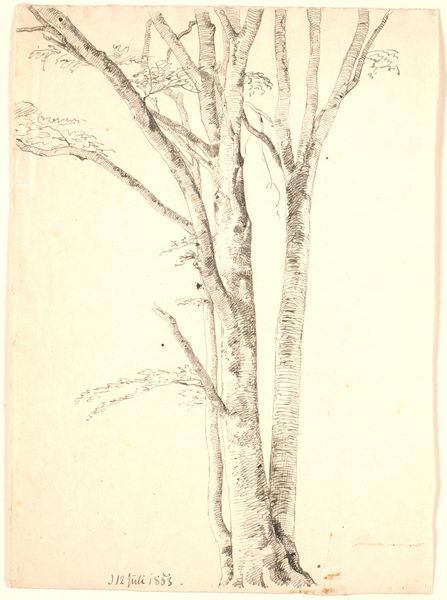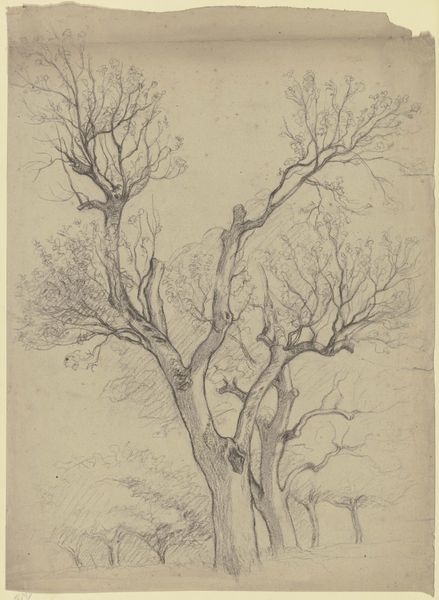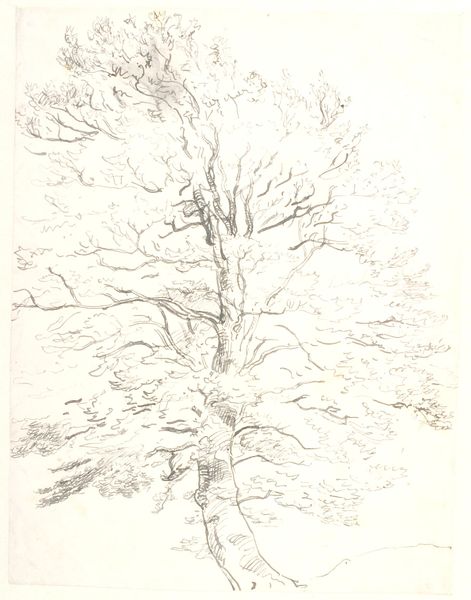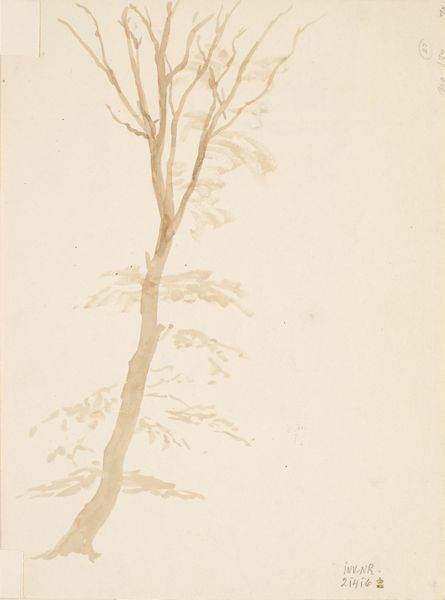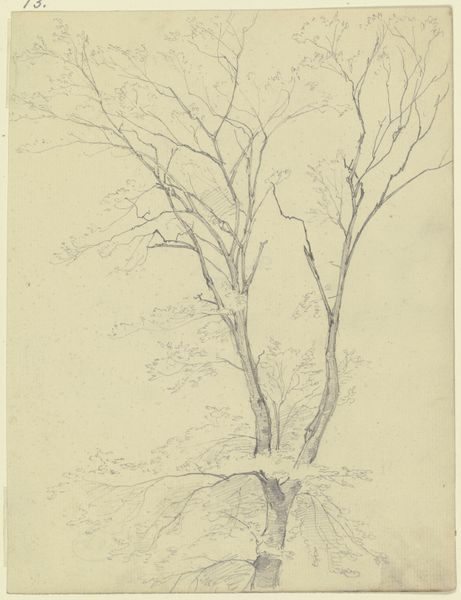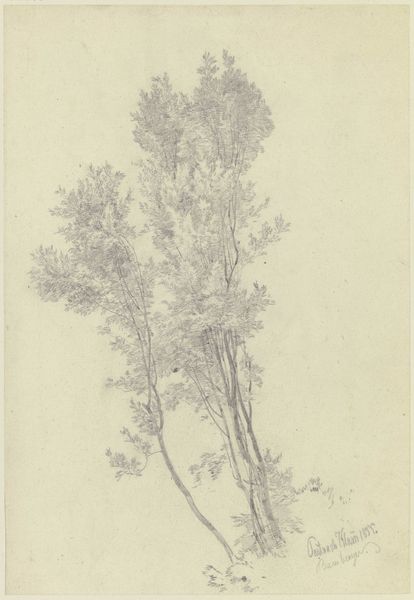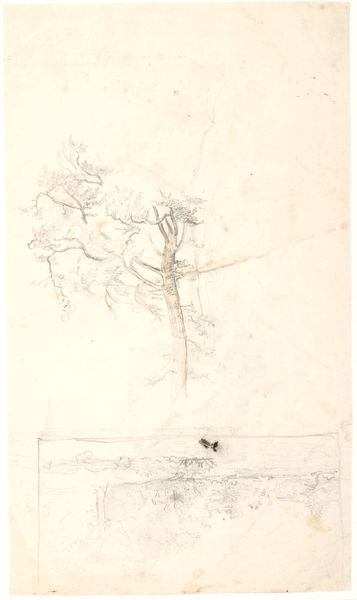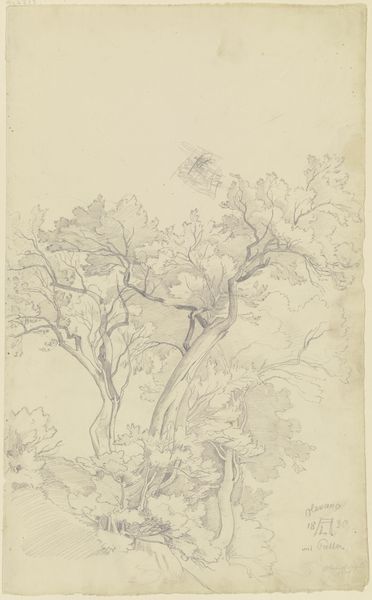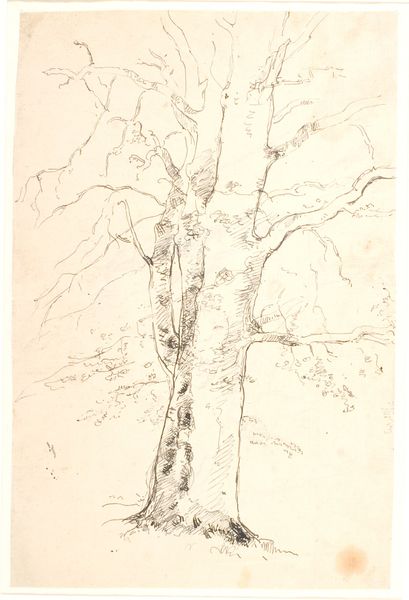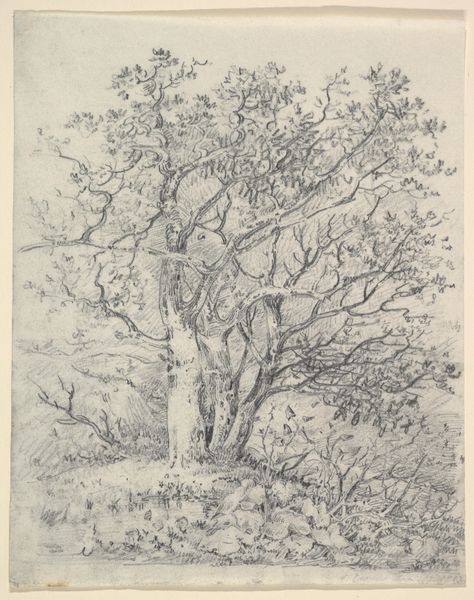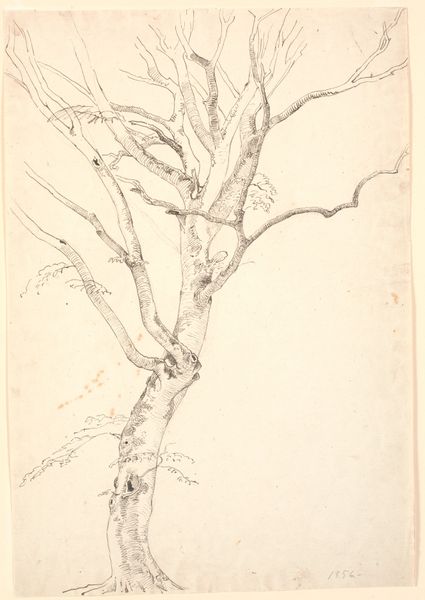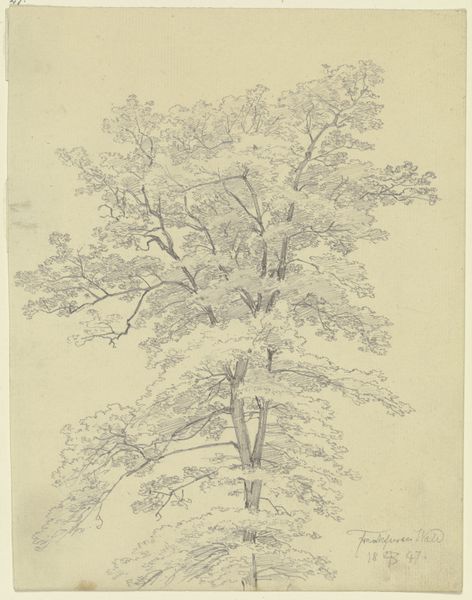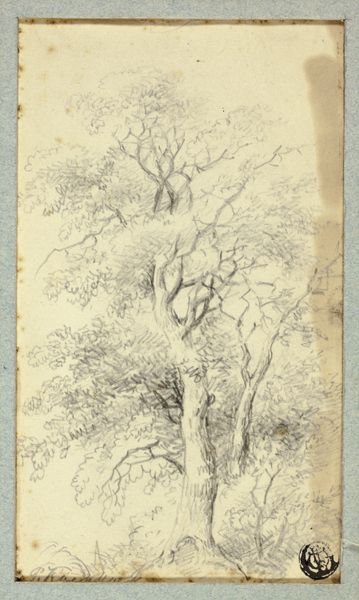
drawing, pencil
#
drawing
#
pen sketch
#
pencil sketch
#
landscape
#
romanticism
#
pencil
#
realism
Dimensions: 485 mm (height) x 352 mm (width) (bladmaal)
Curator: This drawing, "Studie af stynede piletræer" – "Study of Pollarded Willow Trees" – was rendered in 1848 by P.C. Skovgaard. It's currently held in the collection of the SMK, the Statens Museum for Kunst. Editor: Striking how melancholic it feels, isn't it? Despite being a 'study,' the artist has captured such a tangible mood in simple pencil strokes. A real sense of isolation. Curator: "Pollarding" itself is a specific agricultural technique; essentially, controlled deforestation. Limbs of the tree are removed to encourage dense foliage growth higher up the trunk. One can imagine Skovgaard seeing the economic reality in this landscape. Timber for fires and tools, managed growth for stability. Editor: The pollarded willow has deep symbolic roots in Northern European folklore as well. Traditionally associated with sorrow, death, and cycles of mourning, often planted in graveyards. Did Skovgaard consciously select this tree for those inherent associations? Curator: It's plausible. However, his commitment to depicting nature suggests a grounded fascination with agricultural labour. I imagine the repetitive motions of lopping, of actively shaping the wood, captivated him. Notice the tight hatch marks rendering the tree's scarred trunk. Editor: Yes, there is a compelling tension here. Skovgaard manages to simultaneously embrace a level of realistic detail while amplifying the willow's more mournful connotations. I wonder what his contemporaries made of such imagery? Curator: Many would have recognized its visual connections to agrarian life while possibly projecting personal emotions and historical context onto the depiction. It’s difficult for us, in the modern era, to recapture the complex intertwining of utility and symbol. Editor: Perhaps art helps us bridge that divide. It lets us acknowledge the labor, the material conditions, even while intuiting the deeper, enduring narratives they imply. Curator: Indeed. And I'm drawn to how seemingly simple materials can carry such potent cultural meaning. Thank you for unveiling all these layers. Editor: Likewise. It's inspiring how a humble sketch reveals so much about labor and memory.
Comments
No comments
Be the first to comment and join the conversation on the ultimate creative platform.
